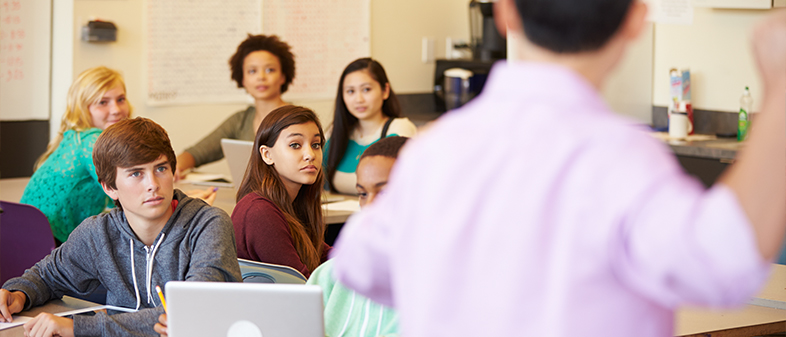
In education, standardized testing offers a broad measure of student performance, but often, the more meaningful indicator of student competency may be most apparent in what educators observe in their classrooms on a daily basis. Though observation of progress in the classroom may be the setting in which true student competency is most evident - districts, administrators and parents still need hard data linking academic achievement to 21st century learning approaches.
Recently, researchers have examined a large body of studies on 21st century learning to determine whether support for the associated learning approaches is isolated or broad and far reaching. One recent meta-analysis across 225 studies on active learning in the STEM field concluded that active learning broadly improves performance and student competency when compared to more traditional methods. A separate review of methods for engineering education concludes that active learning approaches result in significant student benefits, not only in terms of academic achievement, but also in the quality of personal interactions, increased perception of social support and improved self-esteem. These, and other research efforts, suggest that student-centered approaches allow students to develop the skills that they need to take on future challenges. At the same time, active learning methods bear fruit today, showing improved student test scores and greater levels of academic proficiency. Below are two examples of research cases that illustrate this.
Case 1: Better science understanding through peer discussion
This research proposed that student comprehension is improved by even simple active learning opportunities like peer-to-peer interactions. In 16 different sessions across a one-semester science class, students were asked a pair of questions about the content they covered during that class. Each pair of questions covered the same principle or concept. After students responded to the first question through using a clicker to record their response, they then collaborated with peers for several minutes. After discussion, they were then asked to respond to the first question again, at which time they were allowed to change their answers. For the second question, students were again asked to use a clicker to record their answer individually, but this time it was without the benefit of any follow-up peer interactions. This second question tested whether the discussion and the revised responses facilitated a greater group understanding of the overall concept.
Results showed that the group did learn a concept substantially better when they were allowed to discuss the question with their peers. When all 16 pairs of clicker-response questions were analyzed across the semester, researchers found that about half the class showed an understanding of the concept when asked the first question on the first try. When students were allowed to revise their questions after peer interaction, more than two-thirds of the class responded correctly. The real payoff was shown in the second question, where almost three-quarters of the class individually understood the principles well enough to respond correctly without the benefit of peer discussion. The advantage of the peer discussions was most clearly seen when the principles behind the questions were most difficult to grasp.
Case 2: Facilitating group work to improve retention
This research shows the power of the educator to facilitate discussions that enhance the effectiveness of group work. In this study, two different mandatory science lab sessions were proctored according to two different methods. In the first method, the instructor did not directly intervene in the laboratory session, allowing students to run the required trials on their own. In the second method, the instructor asked questions during the experiments, so students would thoroughly consider the concepts. In the lecture classes associated with these labs, both groups worked on the same chapters in their texts and received the same instruction. Both groups also took the same quizzes to test their understanding of the material they learned.
Through the study, 14 weekly quizzes were administered. The scores on these quizzes were greater for the students in the lab classes where instructors posed questions about the concepts. Students also stepped up their game during lab activities. In comparison to the students in the traditional lab, students with the active instructor exhibited greater attendance, asked more questions and collaborated with each other more during lab sessions.
Smith, Michelle; Wood, William; Adams, Wendy; Weiman, Carl; Knight, Jennifer; Guild, Nancy; & Su, Tin Tin. (2009). Why Peer Discussion Improves Student Performance on In-Class Concept Questions.
http://science.sciencemag.org/content/323/5910/122?variant=full-text&sso=1&sso_redirect_count=1&oauth-code=7662e4d5-d433-4ada-9685-f1512b71bbc9
Travis, Holly & Lord, Thomas. (2004). Traditional and Constructivist Teaching Techniques. http://www.nsta.org/publications/news/story.aspx?id=49955
Freeman, Scott; Eddy, Sarah; McDonough, Miles; Smith, Michelle; Okoroafor, Nnadozie; Jordt, Hannah; & Wenderoth, Mary Pat. (2014). Active learning increases student performance in science, engineering, and mathematics.
http://www.pnas.org/content/111/23/8410
Prince, Michael. (2004). Does Active Learning Work? A Review of the Research.
http://www4.ncsu.edu/unity/lockers/users/f/felder/public/Papers/Prince_AL.pdf


